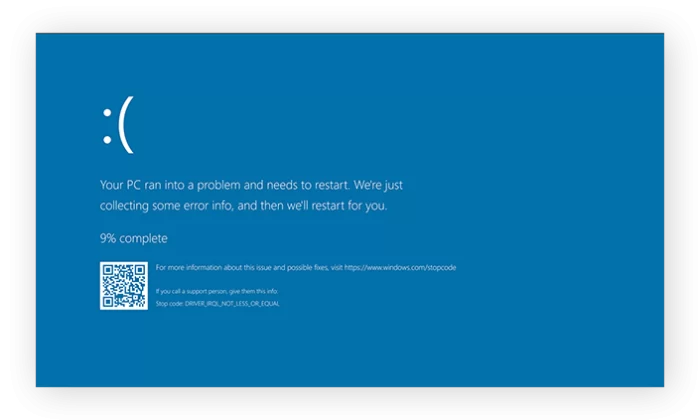Among the most dreaded and cryptic computing errors users dread seeing, the iconic Blue Screen of Death (BSOD) strikes terror signaling critical software failures within Windows PCs and laptops. While advancements make crashes rarer today, BSODs still trigger without warning broadcasting sterile hexadecimal codes and directives to contact tech support. In this article we talk about What Causes the Blue Screen of Death (BSOD)?
But what exactly causes notorious BSOD system crashes? And can average users decipher those alarming error screens themselves to resolve issues minus outside professional help? Let’s demystify the anxiety-inducing Blue Screen illuminating what’s happening behind the scenes when these failures interrupt work plus straightforward troubleshooting banishing their reoccurrence.
Root Causes Behind the Infamous Blue Screen of Death
Conflicting Outdated Drivers
One widespread BSOD culprit links outdated or mismatched drivers communicating between otherwise compatible hardware components and Windows that become corrupted over OS updates leading the PC unable detect parts accurately at bootup. Deleting old drivers fully then updating to latest manufacturer-approved ones banishes crashes.
Failing Storage Drives & RAM Issues
As spinning hard disk drives start deteriorating through age and fragmented data clusters spread further across platters, read/write heads cannot locate critical OS data fast enough to start Windows crashing systems to the BSOD with inaccessible drive messages. Similarly, dust and debris filling memory sticks intermittently obstructs data flows through contacts inducing crashes oddly.
Virus & Malware Infections
Increasingly sophisticated spyware and computer viruses specifically target vulnerabilities around OS kernels, desktop managers, system restores and memory address tables either corrupting core environment variables suddenly or consuming enough resources slowing critical background system processes to unstable states inducing BSOD events trying to halt runaway procedures unsuccessfully.
Software Conflicts Issues During Installation/Update
While collisions between newer applications fighting older legacy programs already exist on systems frequently induce crashes, the highest risks surround incompatible hardware drivers, frameworks and dynamic linked libraries tangled through poor installations and Windows updates. Partially upgraded environments battle older driver versions unstable performances provoking BSODs.
Resolve the Issue Behind BSOD Crashes
Unlike past decades where BSODs required certified professional debugging identifying failures, running home diagnostics and error log reviews today illuminate issues using online queries matching BSOD stop codes to known software conflicts and hardware faults productively.
After noting all the hex and memory values shown during the crash, search engines should pinpoint high probability root causes based on your model. Follow specific component and file integrity diagnostics from there like testing RAM sticks individually through Windows Memory Diagnostic Tool to isolate faults before replacing suspected components entirely. Make incremental changes then confirmation tests between adjustments verifying solutions.
Take Control Over BSOD Errors Going Forward
While experiencing sudden disruptive BSOD interrupts proves frustrating initially, these system-halting notifications actually aim protecting greater data loss by ceasing processes immediately once memory errors escalate past thresholds. New kernel cooling buffers also allow time saving progress first.
Leverage these lessons decoding BSOD causes through specific hex values and error strings prompted plus diagnostics isolating conflicts systematically. Ensure full driver, security and Windows updates install properly so lingering environmental instabilities no longer crash flows unsuccessfully. Then banish the Blue Screen of Death from disrupting productivity permanently going forward! I hope this “What Causes the Blue Screen of Death (BSOD)?” article helps you.

